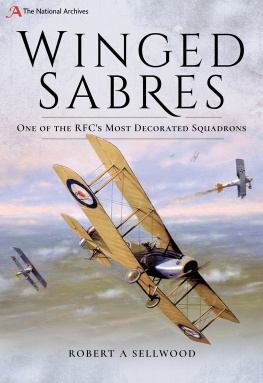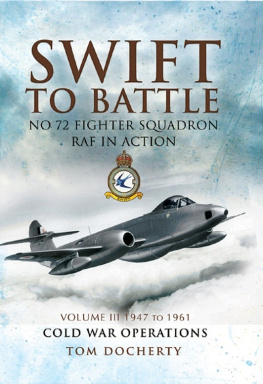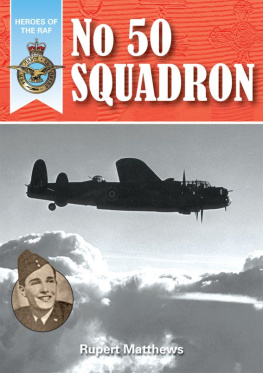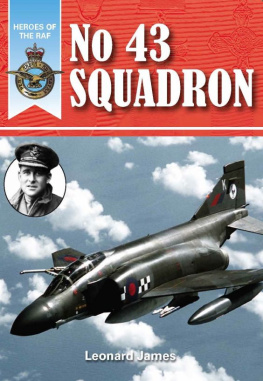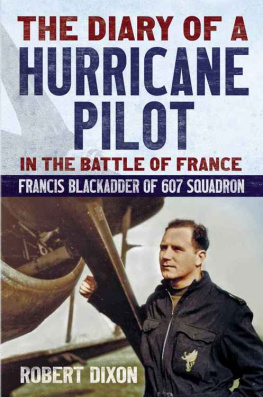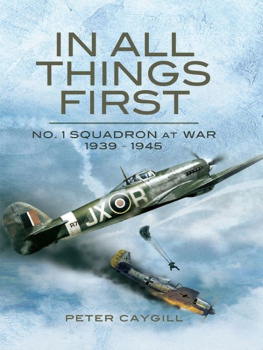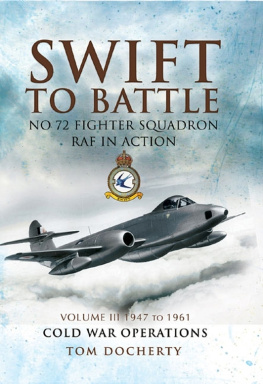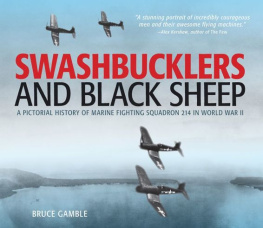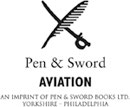Winged Sabres
Winged Sabres
One of the RFCs Most Decorated Squadrons
Robert A Sellwood
First published in Great Britain in 2018 by
Pen & Sword Aviation
An imprint of Pen & Sword Books Ltd
Yorkshire - Philadelphia
Copyright Robert A Sellwood, 2018
The right of Robert A Sellwood to be identified as Author of this work has been asserted by him in accordance with the Copyright, Designs and Patents Act 1988.
The National Archives logo device is a trade mark of The National Archives and is used under licence.
The National Archives logo Crown Copyright 2018 Crown Copyright images reproduced by permission of The National Archives, London England, 2018.
The National Archives is the official archives and publisher for the UK Government, and for England and Wales. We work to bring together and secure the future of the public record, both digital and physical, for future generations.
The National Archives is open to all, offering a range of activities and spaces to enjoy, as well as our reading rooms for research. Many of our most popular records are also available online.
ISBN: 9781526729576
eISBN: 9781526729583
Mobi ISBN: 9781526729590
A CIP catalogue record for this book is available from the British Library.
All rights reserved. No part of this book may be reproduced or transmitted in any form or by any means, electronic or mechanical including photocopying, recording or by any information storage and retrieval system, without permission from the Publisher in writing.
Pen & Sword Books Ltd incorporates the Imprints of Pen & Sword Books Archaeology, Atlas, Aviation, Battleground, Discovery, Family History, History, Maritime, Military, Naval, Politics, Railways, Select, Transport, True Crime, Fiction, Frontline Books, Leo Cooper, Praetorian Press, Seaforth Publishing, Wharncliffe and White Owl.
For a complete list of Pen & Sword titles please contact
PEN & SWORD BOOKS LIMITED
47 Church Street, Barnsley, South Yorkshire, S70 2AS, England
E-mail: enquiries@pen-and-sword.co.uk
Website: www.pen-and-sword.co.uk
or
PEN AND SWORD BOOKS
1950 Lawrence Rd, Havertown, PA 19083, USA
E-mail: Uspen-and-sword@casematepublishers.com
Website: www.penandswordbooks.com
This book was written for my mother in proud memory of the father she never knew.
Driver T2/10816 George Tester, ASC attached 20 Squadron RFC Probationary Aerial Gunner
and his pilot, Captain John Santiago Campbell, Argyll & Sutherland Highlanders and RFC
who were together killed in action on 28 September 1917.
We Will Remember Them
Contents
Introduction and Acknowledgements
The catalyst for this book was my own family history and how the events of more than a century ago played a pivotal part in it. My Scots-born grandfather George Tester was killed in action while flying as an air gunner in the First World War. He left a wife Isabella and daughter, Mary, who was barely two. Three years later, his widow died of tuberculosis and my five-year-old Mum was adopted by her late fathers sister, Aunt Helen, and her husband, Gilbert Thorns, who lived near London. They passed on his medals to her when she was old enough to appreciate them but all she then knew was that he had been killed in action on 28 September 1917 while serving with the Royal Flying Corps.
In 1996, nine years after my own fathers death, Mum remarked that I was lucky to be able to visit my Dads grave from time to time as she did not know where her own father lay or even if he had a proper grave. Touched by her remark, my sister Rosemary and I began a hunt that culminated in the three of us standing at the side of his war grave at the Pont du Hem Military Cemetery in northern France, where he lies beside his pilot and fellow Scot, Captain John Santiago Campbell. This profoundly moving experience was rendered even more poignant as we listened to the nightly sounding of the Last Post at the Menin Gate in Ypres a few hours later. We knew from his war grave details that George was serving with 20 Squadron RFC when he was killed and, once back in England, I found I could not let the matter rest. I wanted to know more about my grandfather and the squadron he flew and died for. So began a family history quest that soon developed into a much larger project.
Following some helpful advice from much published aviation historian Norman Franks, I visited the National Archives at Kew and studied the 20 Squadron Record Books for 1917, a war diary by any other name, and soon realised that 20 Squadron had been far above average in its achievements. Given the almost daily air battles against great odds, the grim toll of casualties and the stunning victory totals, I realised that 20 Squadron was clearly an elite unit. But when I searched for 20 Squadrons Record Books for 1916 and 1918, I found that, apart from a few pages, they had been forever lost when the squadron transferred to India in 1919. In their absence, I began to look further afield.
I tracked down a copy of N.J. Robersons The History of No 20 Squadron RFC and RAF, a limited-edition book published in 1987 mainly for serving and ex-members. It told 20 Squadrons story from the units formation in 1915 through to the mid-1980s but only the first 25 pages related to the First World War. I then studied Norman Franks 1970s articles about 20 Squadron published in the First World War Aviation Historical Society quarterly magazine, Cross & Cockade International, and found that, while his articles provided much fuller information about 20 Squadrons lengthy victory and casualty lists, it was still not enough. Although I now knew a lot more about the squadrons exploits than when I had started, I still knew very little about the men who carried them out and almost nothing about the hopefully sound military reasons that lay behind their missions. I decided that the full story of one of the most decorated and successful of all the two-seater fighter squadrons on the Western Front deserved to be told. With that in mind, I began to research the higher-echelon records and casualty reports at Kew that were likely to relate to 20 Squadron. There were many. In addition, I received much help from the Imperial War Museum, the RAF Museum at Hendon and the Commonwealth War Graves Commission. My grateful thanks are due to all these institutions and their very helpful staffs.
I have also been exceptionally lucky in receiving the help I have from the descendants of some of 20 Squadrons men and many others who have helped out of interest. These include Jamie Tyrell, from Belfast, regarding his grandfathers service and Lorraine Colvill-Jones, in Argentina, who recently published a book about her great-uncle, Tommy Colvill-Jones, titled Your Ever Loving Son. Mrs Hope Iaccaci (now Hope Thayer) was equally generous in providing help with my research on her father, the American 20 Squadron ace Paul Iaccaci and his brother August. So too, my gratitude to Chris Boucher, John Colbert, Michael Scott and Simon Burbidge with regard to their own ancestors. Also deserving my warmest thanks are Mark McCall, his sister Dee Arkell and their cousin Tom McCall for their unstinting research and help regarding Malcolm McCall and Clement Boothroyd, and Major Les Donnithorne for his help with Randolph Whites story. Similarly, I would like to thank Nick Forder and Tony Grange-Bennett, both long-standing members of Cross & Cockade International, for their help and interest. I also gratefully acknowledge the help of the many members of The Great War Forum at http://1914-1918.invisionzone.com/forums and theaerodrome.com. Of several who helped me on these forums, I would particularly like to thank Frank Olnyk for helping me to access German War Diaries held in the US National Archives. Likewise, my gratitude to Russ Gannon for his willing and expert help in tying in some of 20 Squadrons victory claims with lesser known German losses, and Alex Revell for his help with James McCuddens logbook.

